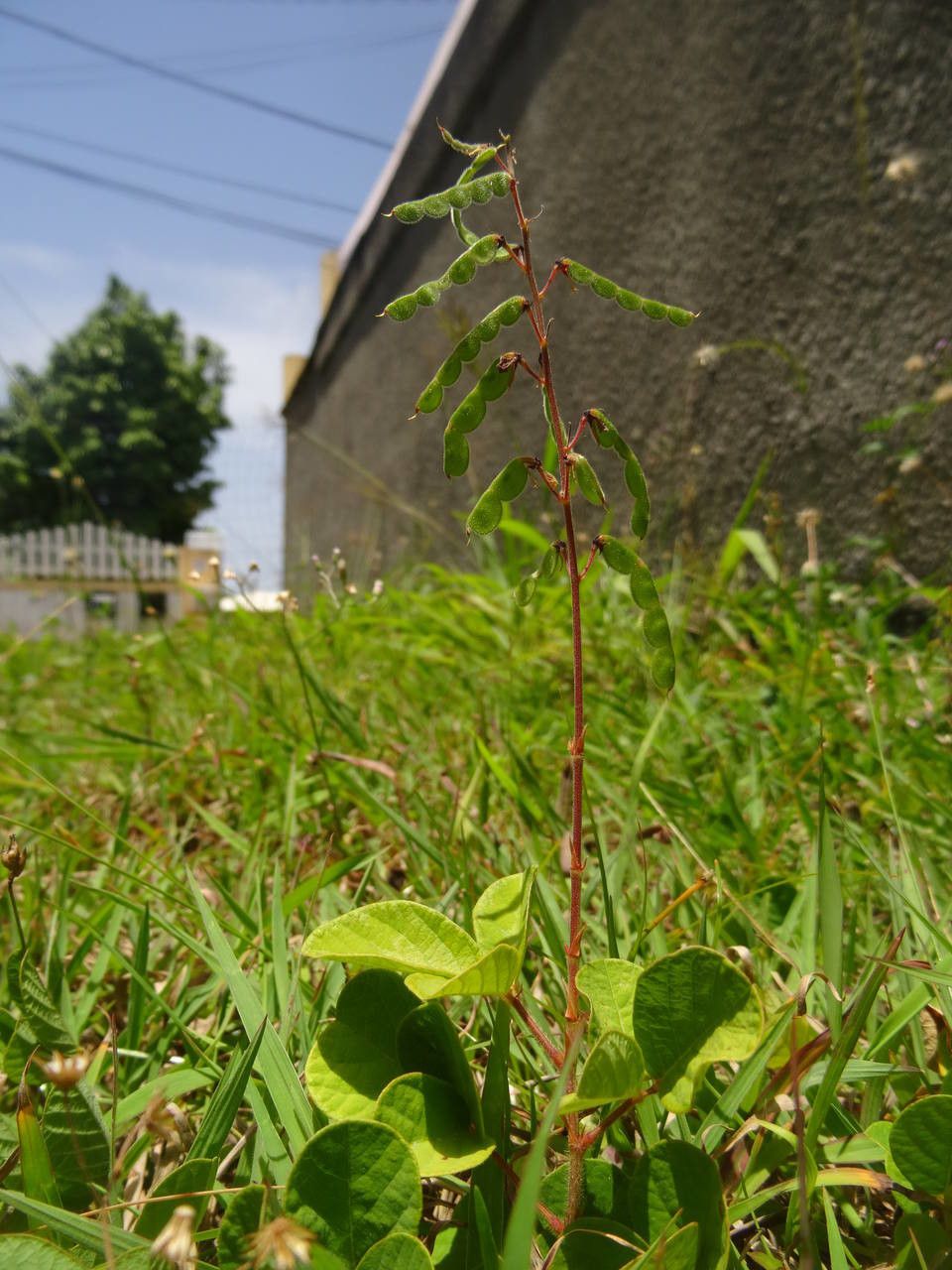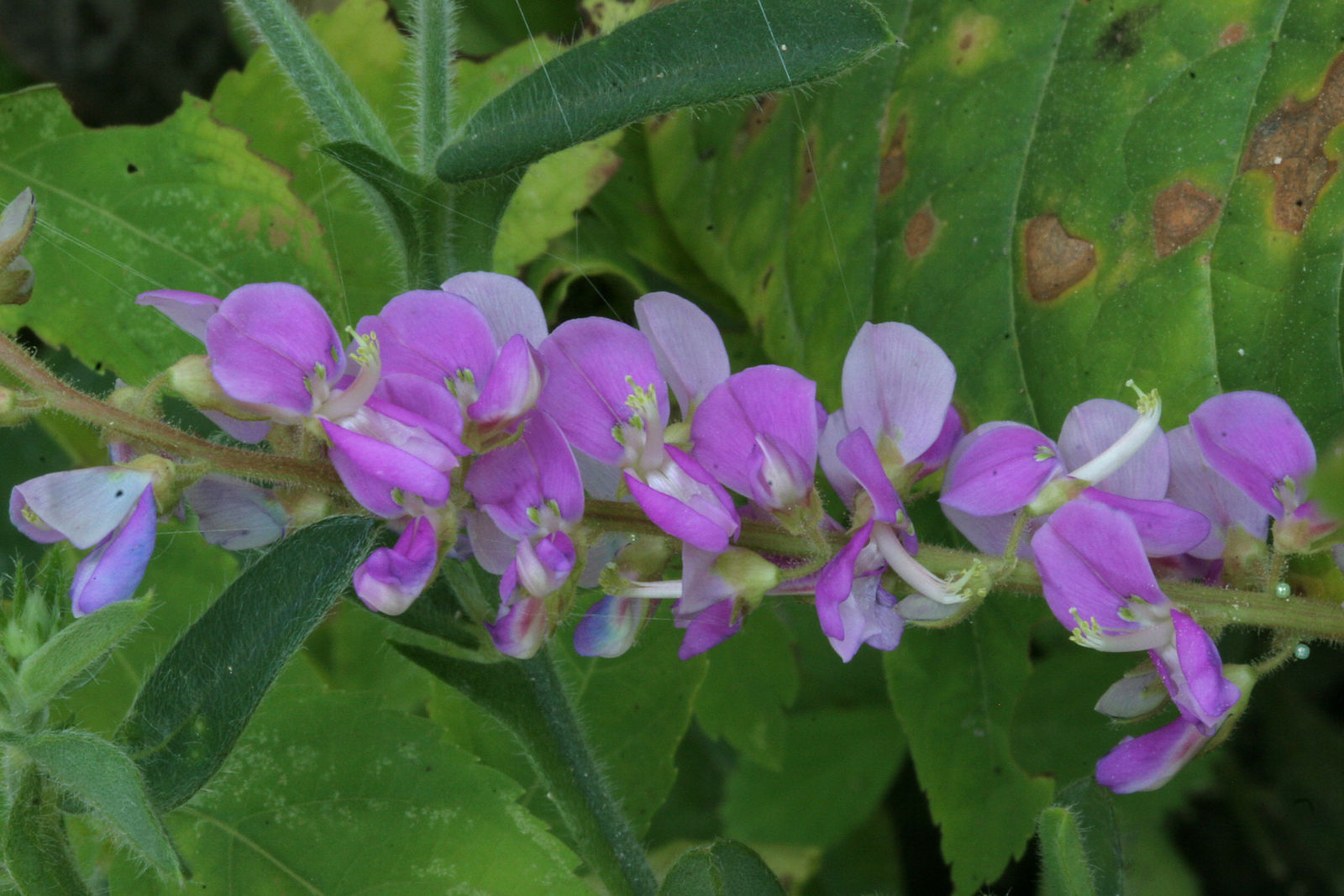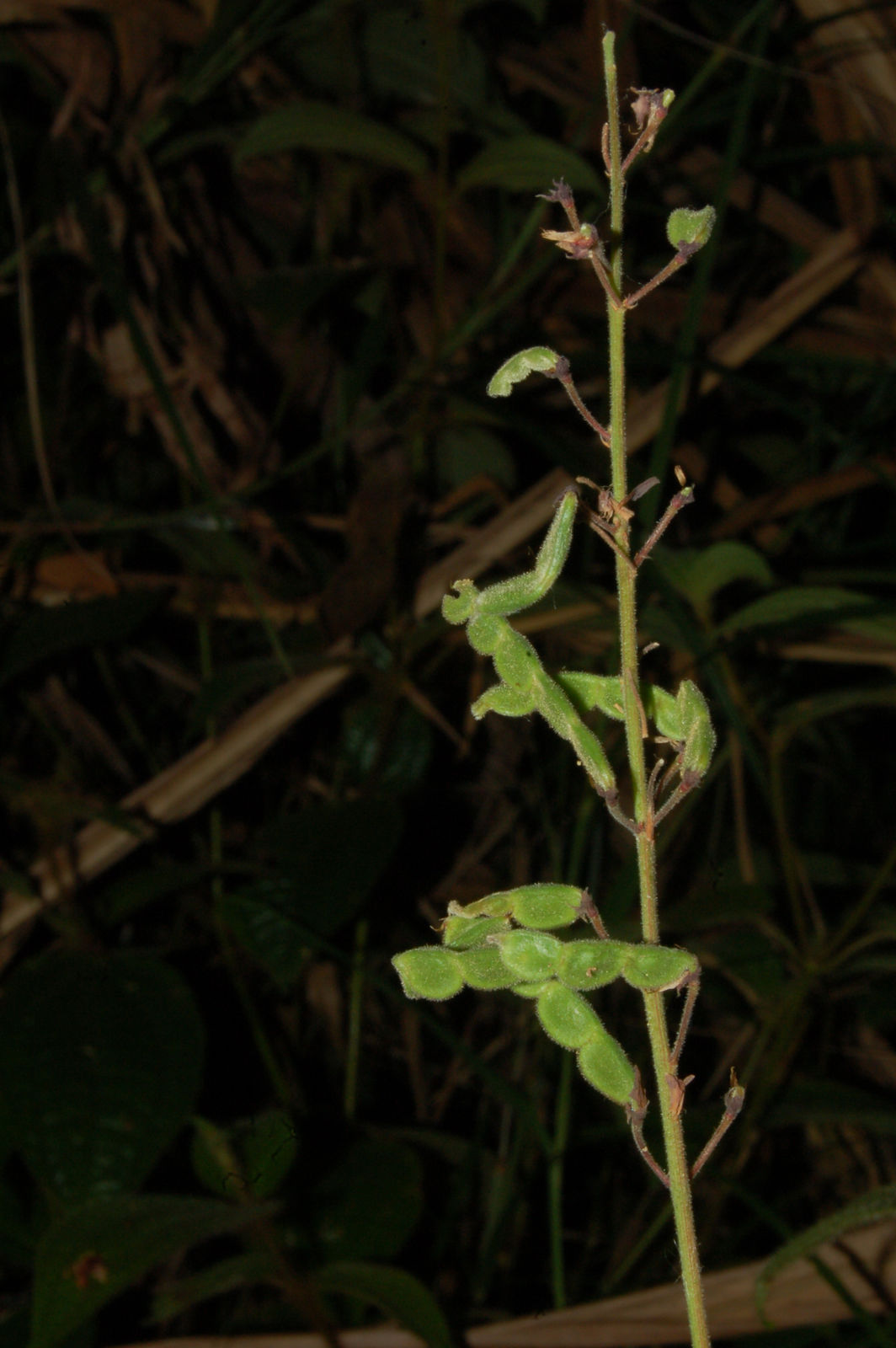Crazy Bush Clover
desmodium incanum
Also known as: ["Antillia incana","Desmodium canum"]
Overview
A perennial legume with trifoliate leaves and pinkish-purple flowers, often found in tropical and subtropical regions.
Benefits & Perks
["drought tolerant","wildlife attractant (bees, butterflies, birds)"]
Botanical Classification
| Phylum: | Magnoliophyta |
| Class: | Magnoliopsida |
| Order: | Fabales |
| Family: | Fabaceae |
| Genus: | Desmodium |
| Botanical Name: | Desmodium incanum |
Plant Characteristics
Basic Information
- Category: Herbs & Weeds
- Suitable Location: ground cover in garden beds or as a border plant
- Suitable For:
- Is Weed: No
- Allergenicity: low
Environmental Needs
- Climate: {"temperatureRange":"10–35°C"}
- Hardiness: {"zones":"8–11"}
- Misting: rarely required, only if ambient humidity is very low
- Drainage: Fast-draining to prevent waterlogging.
- Soil Type: Well-draining, loamy soil with organic matter; can tolerate poor soils but thrives with amendments.
Maintenance Level
- Maintenance Level: low
- Toughness Level: high
- Pruning Frequency: As needed, typically every 2–3 months or after flowering.
- Pruning Intensity: Moderate; remove up to one-third of growth if necessary to rejuvenate.
Care Details
Ideal Sunlight Coverage:
Full sun to partial shade; 6–8 hours of direct sunlight daily, with some afternoon shade in hot climates.
Sunlight Tolerance Tips:
Acclimate plants gradually to intense sunlight; protect from harsh afternoon sun to prevent scorching; adjust placement based on indoor/outdoor conditions.
Care Requirements
Care Difficulty
easyeasy
Sunlight
full sun to partial shade
Rotate plant for even light exposure; use shade cloth in extreme heat; monitor for sunburn.
Watering
every 7–10 days during active growth, reduce in winter
Water thoroughly until runoff, allow soil to dry between waterings, avoid wetting foliage.
Soil
well-drained, sandy or loamy soil
pH: Slightly acidic to neutral, pH 6.0–7.0.
Avoid heavy clay soils, ensure good aeration, test pH periodically, amend as needed.
Temperature
Thrives in warm conditions, 70–85°F (21–29°C); tolerates mild frosts but prefers stable warmth.
Protect from frost, provide shade in extreme heat, maintain consistent warmth for best growth.
Fertilizing
every 4–6 weeks during growing season
Apply fertilizer after watering, use slow-release options for convenience, flush soil occasionally to prevent buildup.
Propagation
Methods
Stem cuttings or division; stem cuttings are most common and reliable.
Step-by-Step Propagation Guide
- Take 4–6 inch cuttings, remove lower leaves, dip in rooting hormone, plant in medium, keep moist and warm.
Best Time: Spring or early summer when the plant is actively growing.
Environment
Warm, humid environment with indirect light; maintain 70–75°F (21–24°C) and high humidity.
Medium
Well-draining potting mix with perlite or sand; can also root in water.
Hormone
Optional but recommended for faster rooting.
Timeline
Roots develop in 2–4 weeks; new growth appears in 6–8 weeks.
Tools Needed
Pruning shears, rooting hormone, small pots, well-draining mix, misting spray bottle.
Quick Tips
Use healthy, non-flowering stems; keep soil consistently moist but not waterlogged; provide bottom heat if possible.
Pruning & Repotting
Pruning Guide
Method
Pinch back tips for bushier growth, cut stems just above a leaf node or bud.
Pruning Plan
Prune to maintain shape, encourage bushiness, and remove dead or overgrown stems.
Tools
Pruning shears, sharp knife, gloves.
Checklist
Sterilize tools, prune during active growth, remove dead/diseased parts, shape evenly.
Repotting Guide
Best Season
Spring, before the active growing season begins.
Pot Size
Increase pot size by 2–3 inches in diameter; ensure good drainage.
Method
Remove plant gently, trim roots if crowded, place in slightly larger pot with fresh soil, water lightly.
Suggestions
Repot every 2–3 years or when roots fill the pot; beneficial for growth and soil freshness.
Checklist
Choose appropriate pot, prepare fresh soil mix, handle roots carefully, water after repotting.
Advanced Care Tips
Watering Mastery
Watering Checklist
Check soil moisture, water deeply, ensure drainage, avoid wetting leaves, adjust for season.
How to Apply Water Properly
Water directly at the root zone, ensure even saturation to a depth of 6–8 inches, allow excess water to drain, water in the morning to reduce evaporation.
Watering Schedule Tips
Water deeply once the top inch of soil is dry; reduce frequency in winter to prevent root rot.
Soil Improvement
Add compost or aged manure for fertility, mix in perlite or sand for drainage, ensure organic matter is well-decomposed.
Temperature Stress Management
Signs of Temperature Issues
Wilting, leaf drop, yellowing, or stunted growth in response to extreme cold or heat.
Cold Stress
Slows growth, may cause leaf discoloration or dieback in prolonged cold; vulnerable to frost damage.
Solution: Provide frost protection (e.g., row covers), move potted plants indoors, avoid overwatering in cold.
Hot Stress
Leaves may wilt, curl, or scorch; growth may slow under intense heat and drought.
Solution: Increase watering, provide afternoon shade, use mulch to retain soil moisture, ensure good air circulation.
Fertilizing Guide
Fertilizing Checklist
Check fertilizer type, dilute correctly, apply during active growth, avoid winter feeding.
Fertilizing Method
Use balanced liquid fertilizer diluted to half strength every 4–6 weeks during growing season; avoid fertilizing in winter.
Common Problems & Solutions
Toxicity Warning
Cats
Non-toxicDesmodium incanum is not toxic to cats. It is generally safe for feline exposure and consumption.
⚡ Toxic If:
Not applicable
Dogs
Non-toxicDesmodium incanum is not toxic to dogs. It is often used as a forage plant and poses no known health risks to canines.
⚡ Toxic If:
Not applicable
Humans
Non-toxicDesmodium incanum is not considered toxic to humans under normal circumstances. It is commonly used as forage and has no known adverse effects on human health.
⚡ Toxic If:
Not applicable
Frequently Asked Questions
Q: Is Desmodium incanum suitable for garden cultivation?
A: Yes, it can be grown in gardens, but it is often considered a weed due to its invasive nature.
Q: Does Desmodium incanum attract wildlife?
A: Yes, it attracts bees, butterflies, and other pollinators.
Q: How does Desmodium incanum handle drought conditions?
A: It is highly drought-tolerant and can thrive in arid environments.
Quick Reference
| Family: | Fabaceae |
| Care: | easy |
| Light: | full sun to partial shade |
| Water: | every 7–10 days during activ |
Get Expert Care Tips
Download the Plantious app for personalized care reminders and plant identification!
Google Play App Store








